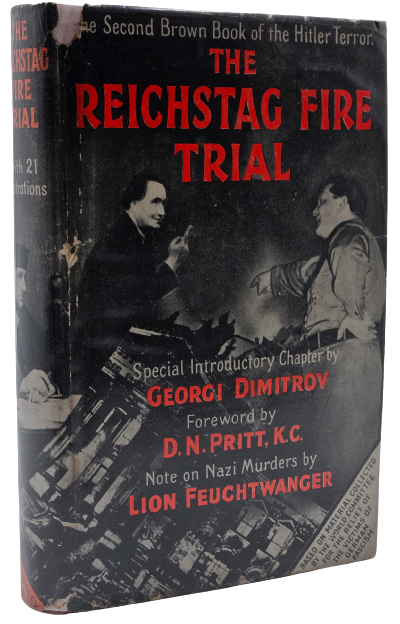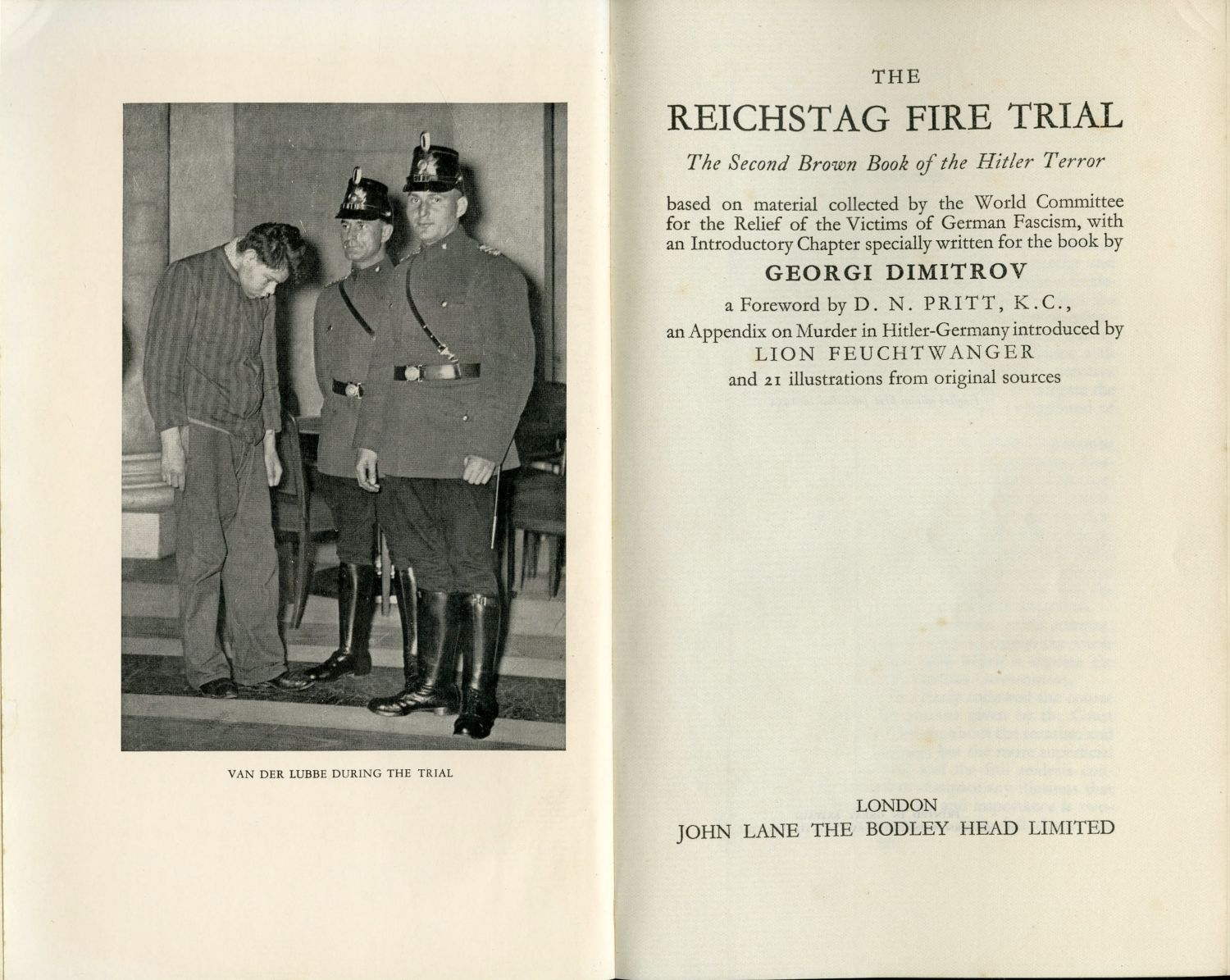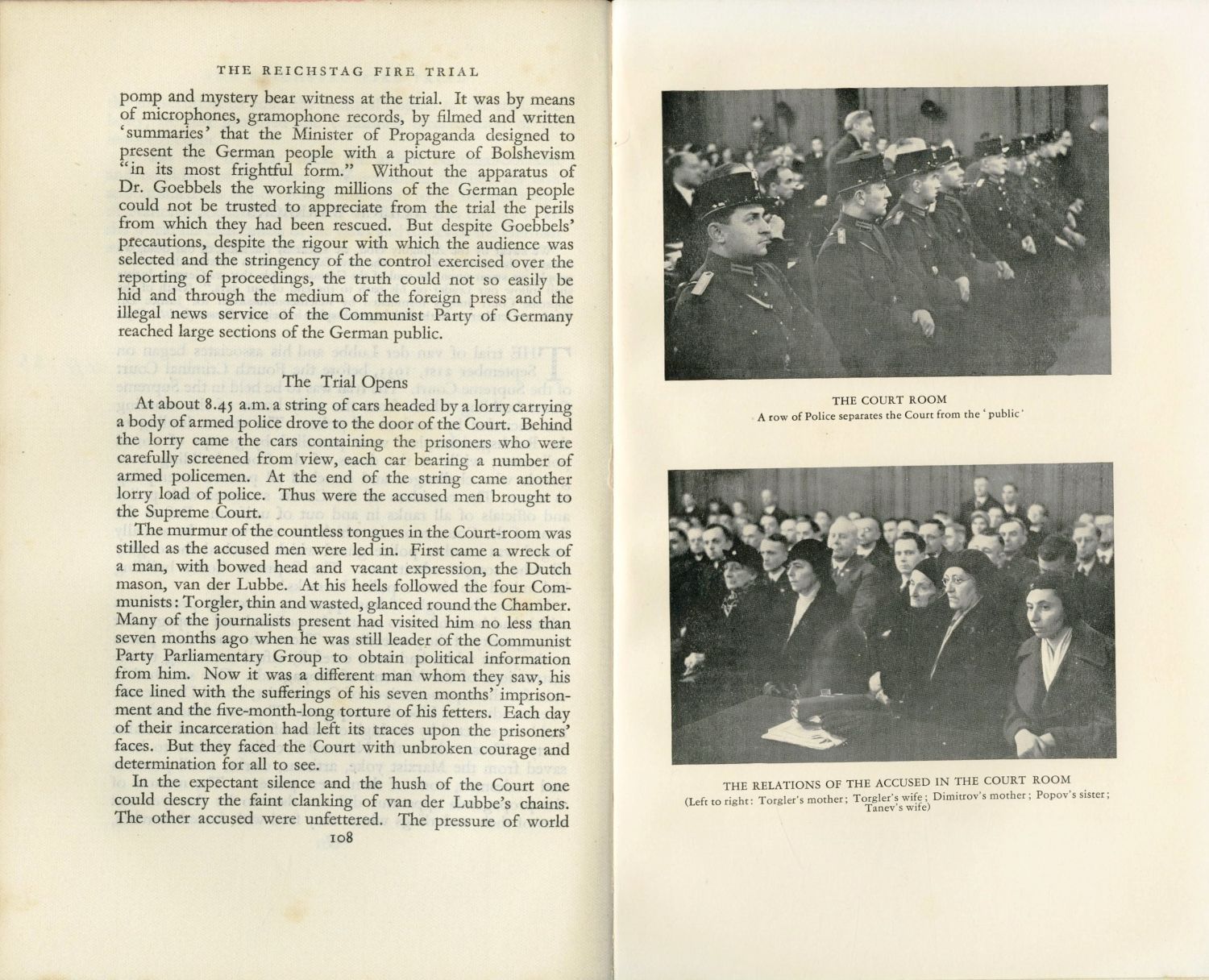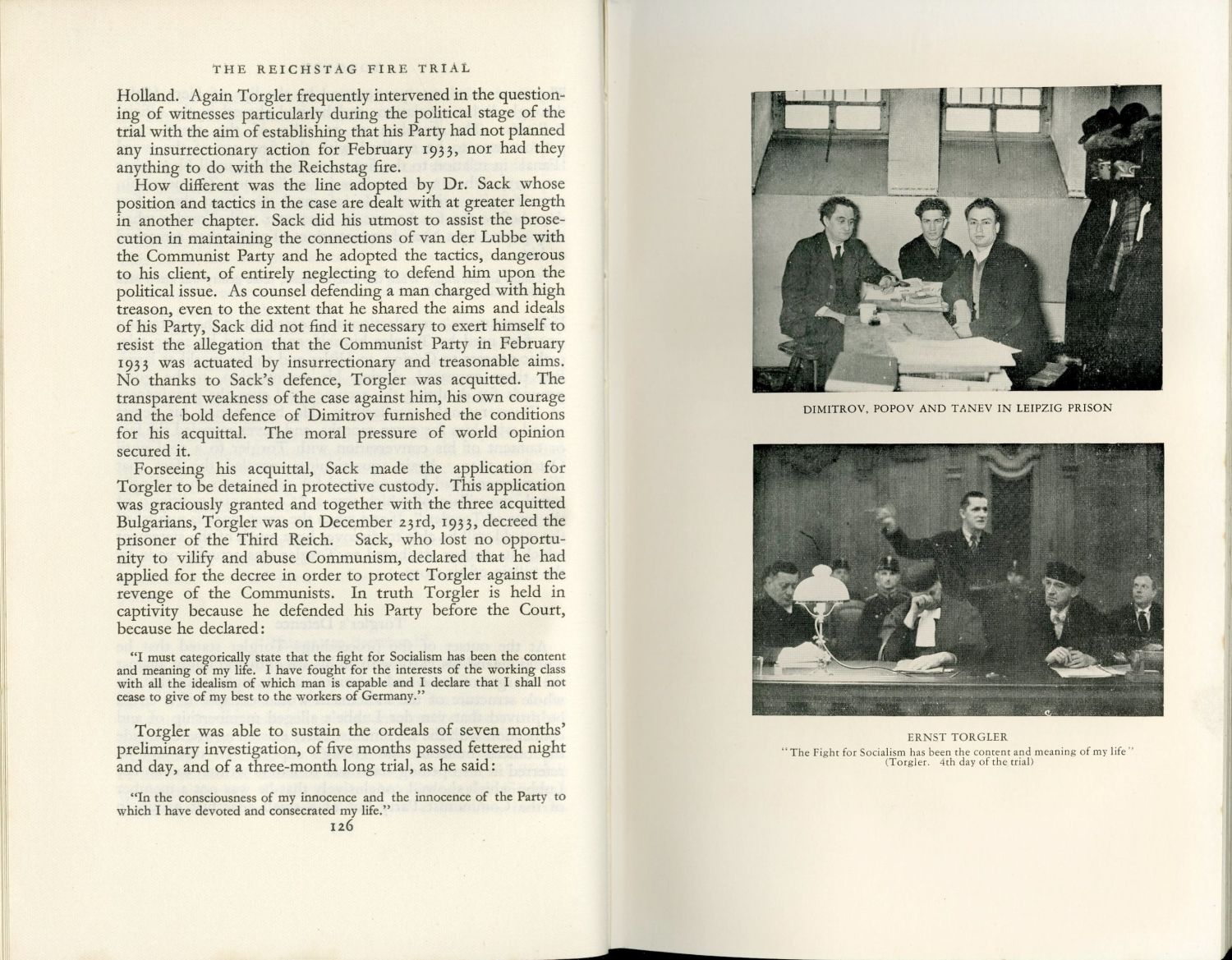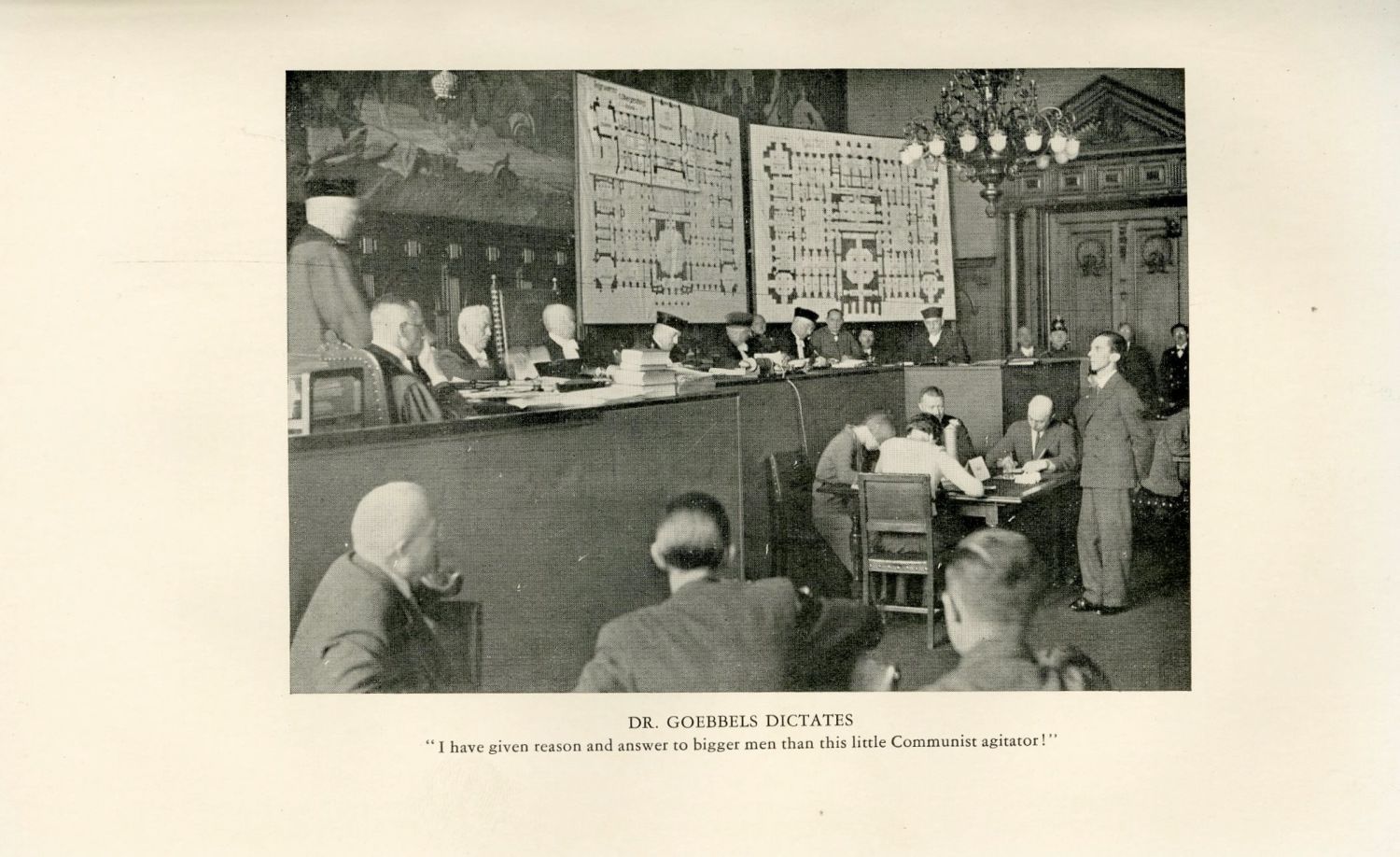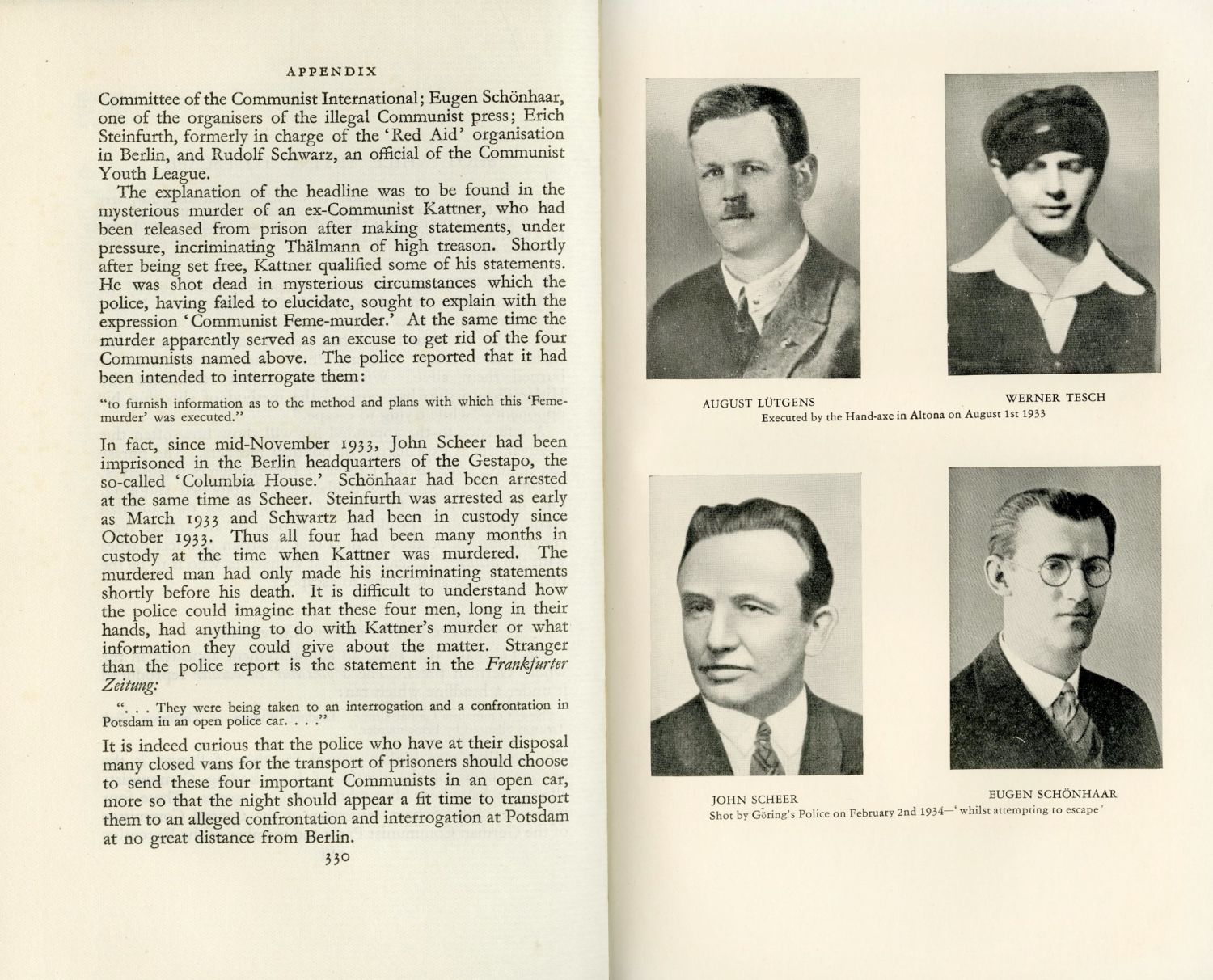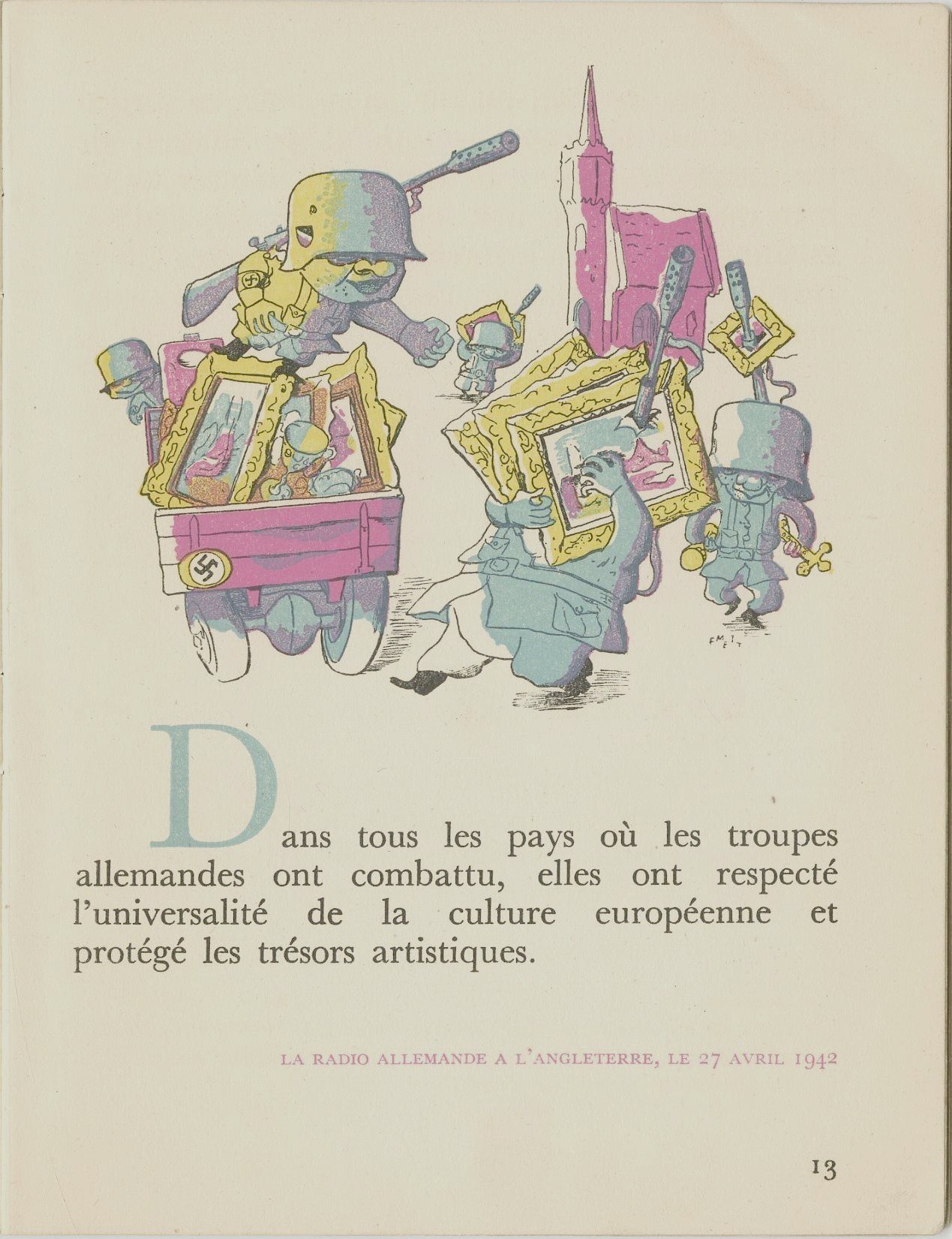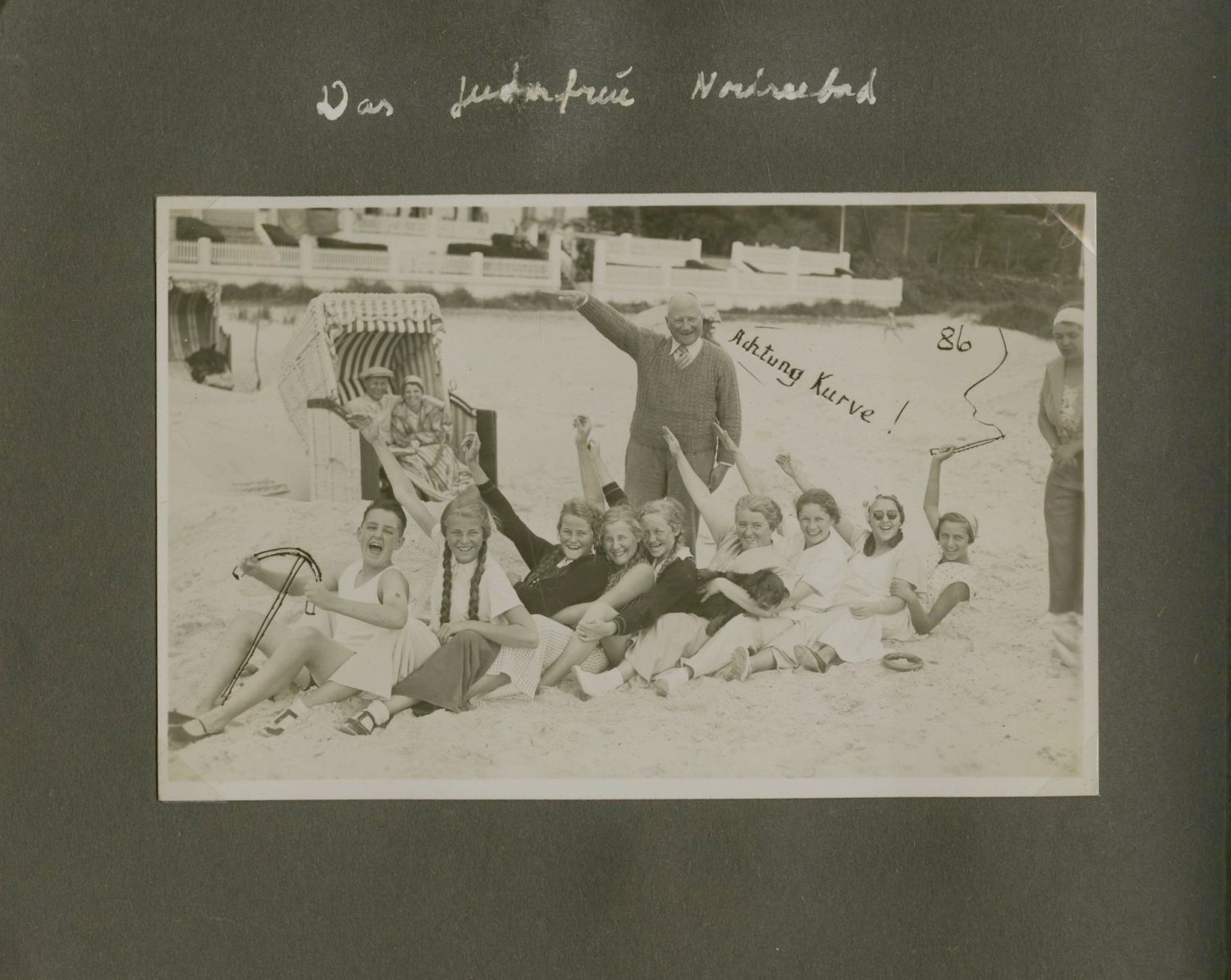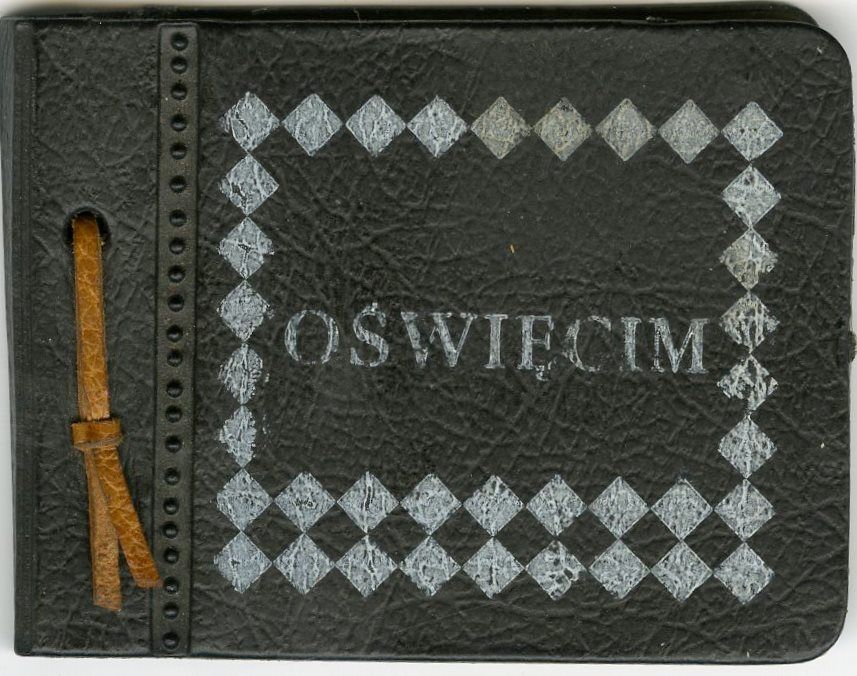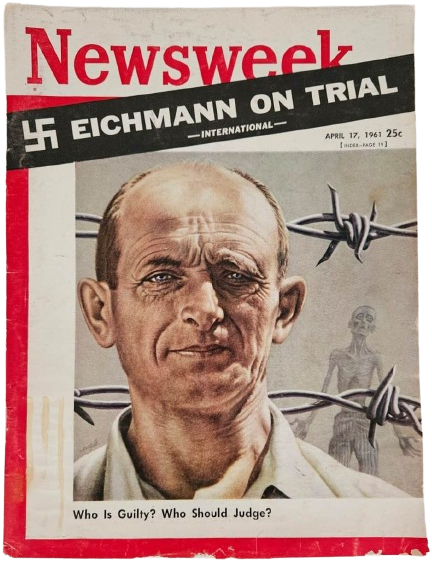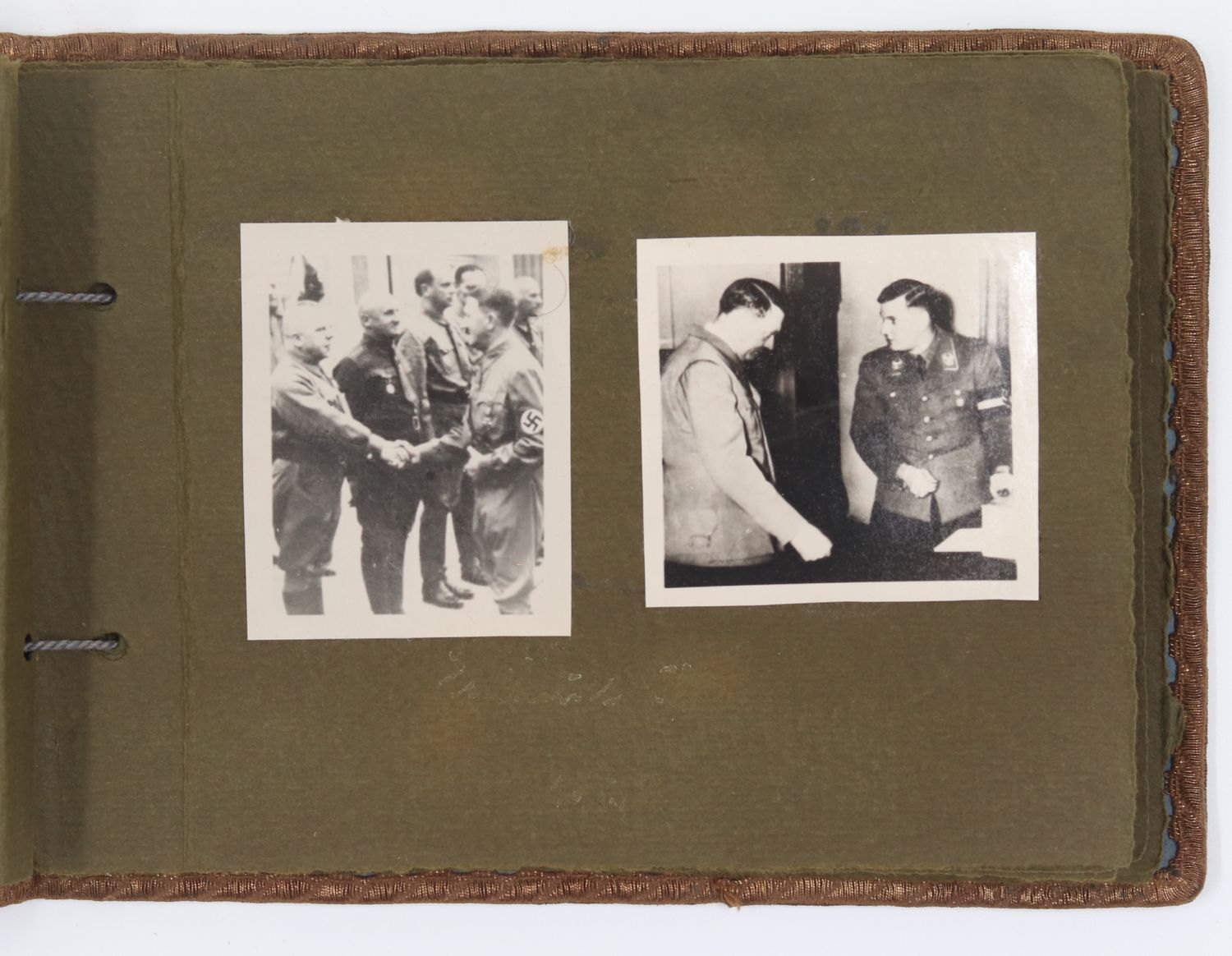THE REICHSTAG FIRE TRIAL The Second Brown Book of the Hitler Terror - Notes on Nazi Murders by Lion Feuchtwanger. Published by John Lane The Bodley Head, London 1934 - First edition. A detailed report on the trial of the burning of the German Reichstag - based on material collected by the World Committee for Assistance to Victims of German Fascism - accompanied by 21 photographs from the court hearings and the surrounding events. The known copies of the book are missing the dust jacket. Before us is a rare copy with the original dust jacket with a photograph of Goering against the background of the burning Reichstag. Special introductory chapter by Georgi Dimitrov, foreword by D. N. Pritt, K. C.
An important publication by the World Committee for Assistance to Victims of Fascism, published a few months after Van der Lubbe's conviction for burning down the German Reichstag building, with the aim of arousing world public opinion against the crimes of Nazi Germany. The book reveals the Nazi plot in the Reichstag burning event, the miscarriage of justice committed against the defendants while recounting in detail the court hearings and the arguments of the parties, the persecution of the Jews that was a direct continuation of the outcome of the trial, and above all it comes to warn against Nazi terrorism and its dark methods exposed in the book.
On the night of February 27, 1933, an unemployed Dutch construction worker named Marinus van der Lubbe set fire to the Reichstag building, causing severe damage. The Nazis blamed the communists for the fire and claimed emergency authority to crush all opposition. To bolster Nazi claims, the police also arrested three Bulgarian members of the Communist International, who were in Germany at the time, and a leading German Communist. However, despite Nazi claims, responsibility for the fire is unclear. The German Supreme Court found only Van der Lubbe guilty, and he was beheaded on January 10, 1934. The court acquitted the other defendants because there was insufficient evidence of their involvement. The trial cast a dark shadow over the suspicion that Goering and the Nazis had a hand in setting fire to the Reichstag, but by this time they were already established in power. Hitler, outraged by the outcome of the trial over the acquittals of the two, demanded that henceforth accusations of treason be tried only by the new "People's Court" he had established, in which the judges would be members of the Nazi party. The exact circumstances of the arson remain unclear to this day. Most historians agree that van der Lubbe was indeed involved in arson, but it seems unlikely that he alone managed to bring in a large quantity of flammable materials and disperse them at many points in the building. It is widely believed that the Nazis persuaded him to set fire to the building, but at the same time they planted additional incendiary materials in the building without his knowledge. There is evidence that the fuel materials were planted by SA personnel led by Karl Ernst in a tunnel that connected the Reichstag to the office building of Goering, who was the chairman of the house. Ernst himself, as well as other witnesses, were murdered a few months later on the night of the Long Knives.
The burning of the Reichstag, the home of the German parliament, which occurred on the evening of February 27, 1933, was a seminal event in the consolidation of the Nazi Party in power in Germany. The new Nazi regime quickly took advantage of the event to get rid of its opponents and establish a tyrannical regime while renounce the remnants of the Weimar Republic's constitution. It was the Reichstag fire that provided the Nazis with the reasons they needed to enact far-reaching "emergency laws" and create the public atmosphere necessary to consolidate the regime. In this respect, whether it was the Nazis themselves who initiated and carried out the fire, or Van der Lubbe, in an act of insanity, the importance of the burning of the Reichstag was inflated by the interested parties, members of the Nazi party, far beyond the importance of the act (as the activity of a single insane person) or the danger that the citizens of Germany supposedly faced. Thus, the burning of the Reichstag became a milestone in Germany's decline from liberal democracy to Nazi dictatorship.
XIII, [3], 362, [6] p. 23 cm. Red hardcover with the original dust jacket. The back of the dust jacket is missing, and completed with paper adhesive. Otherwise Very Good Condition.

